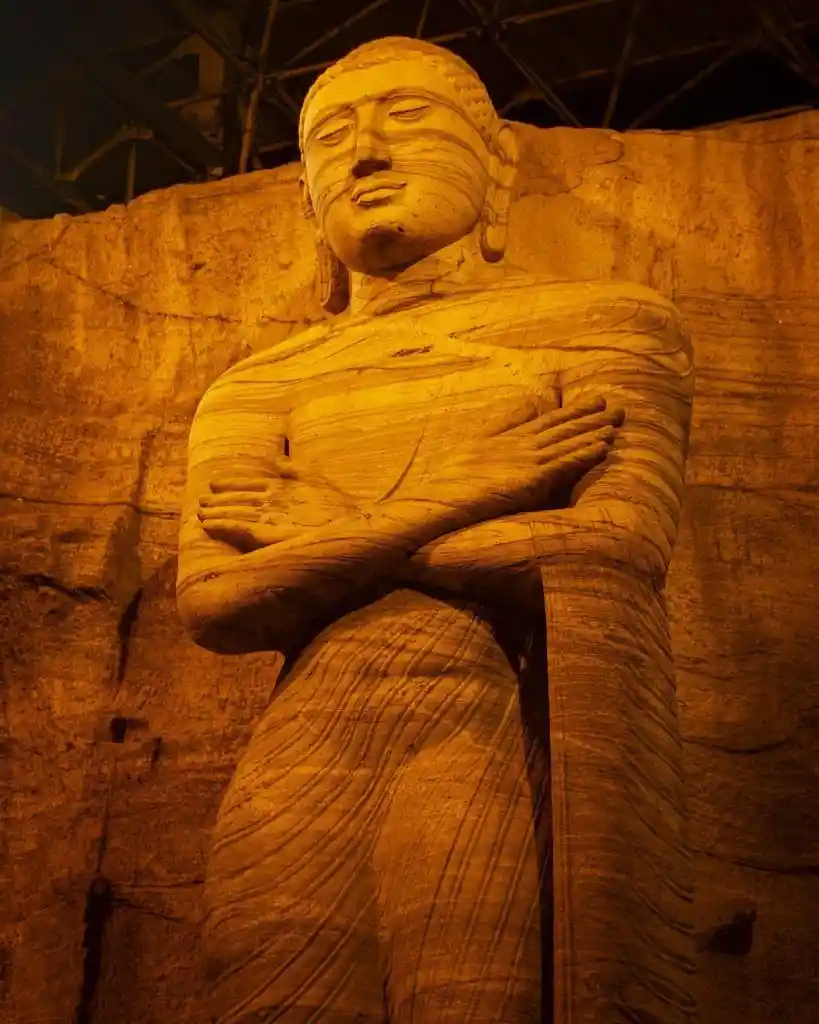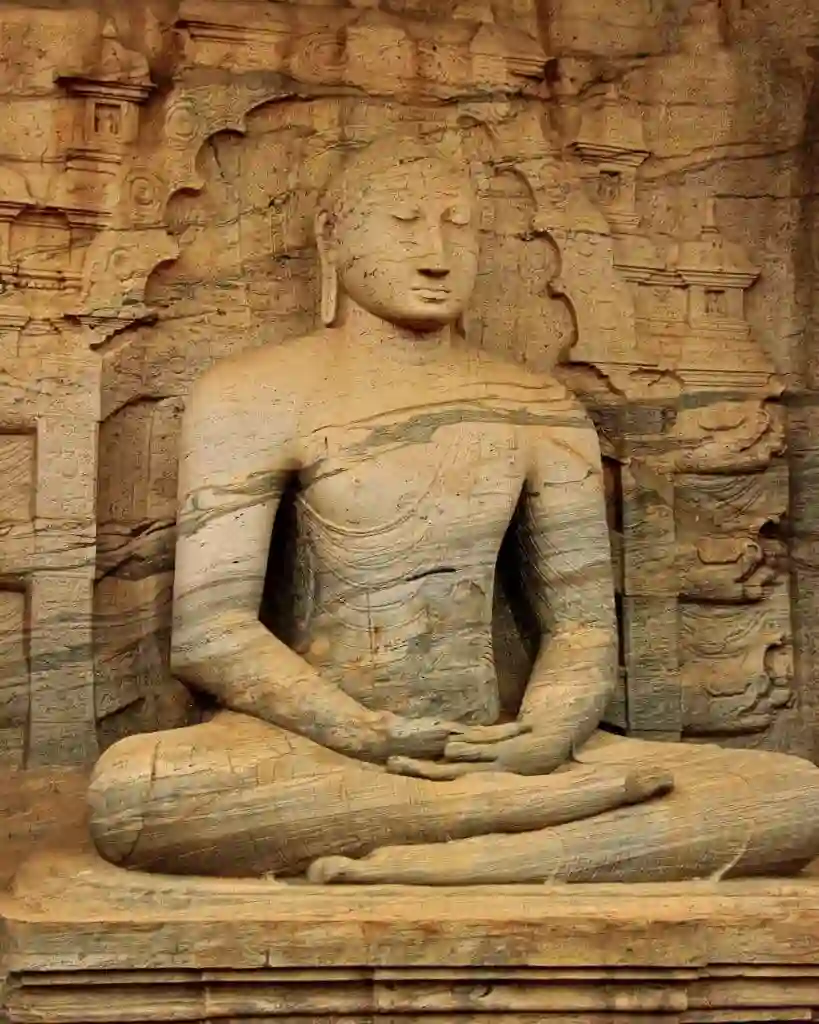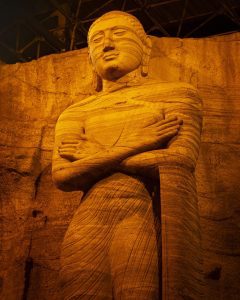
Heritage Triangle Cities
Polonnaruwa
🏛️ UNESCO World Heritage Site: 1982
🕰️ Golden Era of Kings: Explore the legacy of King Parakramabahu and his advanced irrigation systems like the Parakrama Samudraya.
🗿 Sacred Quadrangle: Admire masterpieces like the Vatadage, Gal Viharaya, and Lankatilaka Temple.
🌿 Blend of History & Nature: Wander through well-preserved archaeological sites surrounded by scenic landscapes.
🚶 Perfect for History Lovers: Dive into the stories of kings, monks, and craftsmen that shaped this ancient city.
INTroduction
Polonnaruwa, a UNESCO World Heritage Site, is one of Sri Lanka’s most treasured ancient cities. Renowned for its well-preserved ruins, the city was the medieval capital of Sri Lanka from the 11th to 13th centuries. Polonnaruwa offers visitors a glimpse into the island’s rich history and culture, making it a must-visit destination for history enthusiasts and spiritual seekers alike.
Historical Legacy
Polonnaruwa, Sri Lanka’s second ancient capital, is a treasure trove of history that dates back to the 10th century CE. It rose to prominence under King Vijayabahu I, who liberated the island from the Chola invaders. During its golden era (11th to 13th centuries), the city flourished as a center of art, culture, and advanced engineering.
Under King Parakramabahu I, Polonnaruwa became a symbol of Sri Lanka’s ingenuity and prosperity. The king constructed the Parakrama Samudraya, a massive irrigation reservoir, earning him the title “Parakramabahu the Great.” This reservoir not only sustained agriculture but also served as an engineering marvel that still functions today.
The city’s architectural brilliance is evident in landmarks like the Sacred Quadrangle, home to the Vatadage, Thuparama, and Lankatilaka Temple, which display intricate carvings and structural excellence. The Gal Viharaya, with its giant rock-carved Buddha statues, remains one of Polonnaruwa’s most iconic sites, symbolizing the artistic and spiritual grandeur of the Polonnaruwa Kingdom.
In 1982, UNESCO declared Polonnaruwa a World Heritage Site, ensuring its rich legacy would be preserved for future generations. Today, visitors can explore its ruins and immerse themselves in the stories of kings, monks, and craftsmen who shaped this ancient city.

Things to Keep in Mind
Dress Code: When visiting sacred sites, dress modestly (covering shoulders and knees).
Footwear: Visitors are often required to remove shoes and hats when entering temple premises.
Timing: Early mornings and late afternoons are best for exploring ruins, as midday temperatures can be quite high.
Guides: Hiring a knowledgeable guide can greatly enhance your understanding of the historical and religious context.
When Should You Visit Polonnaruwa?
Cultural and Religious Observances
- Vesak Festival: Experience temple decorations and ceremonies marking the birth, enlightenment, and passing of Lord Buddha.
- Poya Days: Monthly observances when local temples host religious events and rituals.
Dry Season (May to September)
- February to early May: Generally hot and dry, with lower rainfall and sunny days—ideal for exploring outdoor ruins without interruption.
- June to September: Also relatively dry, but temperatures can be very high, so plan for early morning or late afternoon site visits.
Rainy Season (October–January)
The North Central Province experiences heavier rainfall during these months due to the northeast monsoon. You can still visit, but be prepared for occasional downpours that might limit sightseeing time.
Getting to Polonnaruwa: Travel Options and Tips
By Train
- Travel from Colombo to Polonnaruwa by train for a scenic journey. The ride takes approximately 6-7 hours.
- Types of Trains: Choose from intercity express trains for a faster trip or slower regional trains for budget-friendly travel.
- Class Options: First, second, and third-class seating available. First-class offers air-conditioned comfort, while second-class provides reserved seats without A/C.
- Pro Tip: Book tickets in advance during peak travel seasons.
By Bus
- Buses operate regularly from major cities like Colombo and Kandy to Polonnaruwa.
- The journey takes 5-6 hours depending on the departure point.
- Pro Tip: Opt for express or semi-luxury buses for a more comfortable ride.
By Car or Taxi
Hiring a private car or taxi is a convenient and flexible way to travel to Polonnaruwa, especially for families or groups.
From Colombo:
The drive takes about 5 to 6 hours (approximately 230 km) via the A1 and A6 highways.From Kandy:
A 3 to 3.5-hour drive (about 140 km) through scenic routes and well-maintained roads.From Sigiriya:
A quick 1.5-hour drive (about 60 km), ideal for travelers exploring multiple UNESCO sites in one trip.Cost:
Prices vary depending on vehicle type and distance. Expect to pay around LKR 14,000–18,000 for a one-way trip from Colombo.Pro Tip:
Book your ride through trusted taxi services or apps like PickMe, Uber, or local tour operators for reliable and comfortable travel.
Tips for Travelers
- Peak Travel Times: Avoid traveling during public holidays or long weekends as trains and buses can be crowded.
- Early Bookings: Reserve train or bus tickets early, especially for first-class train seats or luxury bus options.
- Local Knowledge: For the best experience, consider hiring a local guide to help navigate the city and its attractions.
interactive MAP
Explore More Heritage Triangle Cities!
Don’t stop at Polonnaruwa—uncover the marvels of Sri Lanka’s ancient heritage. Choose your next destination.
Select Your Next City Now! 👉


